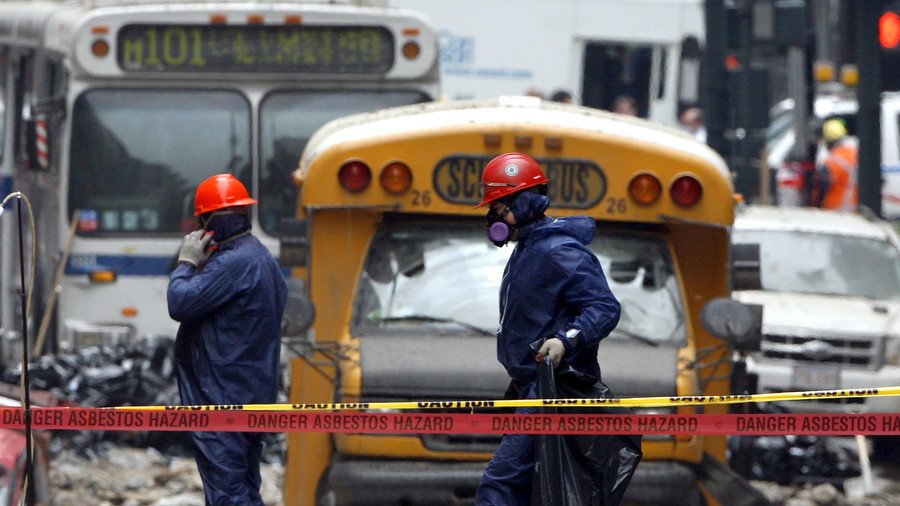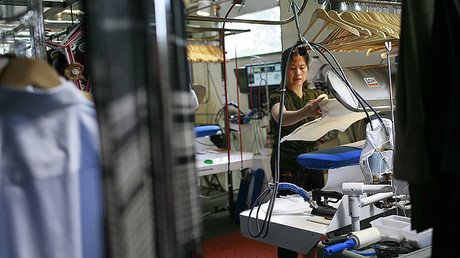‘US industrial giants would rather let workers die than stop using asbestos’ – legal magazine editor

US corporations have been using asbestos despite evidence it causes cancer in workers, and millions of dollars are being spent on lobbying to cover this up, according to Farron Cousins, executive editor of Trial Lawyer magazine.
Asbestos has been used all over the world for more than 100 years in all types of manufacturing, from insulation to paper products. Its use in America is now back on the rise in spite of decades of evidence proving that the substance can lead to death.
After the public became aware of the deadly nature of asbestos, the US government claimed it had taken action to reduce the risk of exposure. Average Americans believe that asbestos is no longer widely used, and the product has been banned for decades. In the late 70s, new rules were drafted in the US that would limit the amount of asbestos in the country, and these rules were finalized in 1989.
A 10-year investigation resulted in more than 100,000 pages of clear evidence confirming a link between asbestos exposure and cancer.
‘It’s like asbestos!’ #Paris Metro staff protest underground air quality https://t.co/6Yo8u8kjfHpic.twitter.com/82wJHiNOF0
— RT (@RT_com) September 18, 2017
Those strict rules were thrown out the window under pressure from asbestos companies like W.R. Grace & Co and Johns Manville. They poured millions of dollars into lobbying campaigns to convince politicians and regulators that asbestos wasn’t as dangerous as it was presented.
RT: What can you tell us about these documents, which clearly show the danger of asbestos?
Farron Cousins: What is interesting about those documents is that they lay the foundation for how all corporations after [the ban of] asbestos began to handle any problem that they had. The one with the former president of Johns Manville – he wanted workers to die on the floor of his factory, because it would save them money, so they wouldn’t have to pay out any kind of disability claims, or anything like that – let them just die on the factory floor – “because we’re not going to tell you about the dangers.” That is the level of carelessness and absolutely borderline criminal disregard for human life – that we’ve really seen in any corporation. And again, other companies looked at this and, rather than saying: “Wow what a notorious way to behave,” they looked and it and said: “You know what? Let’s copy that formula. Let’s cover up the dangers...”
RT: From your theory, the blueprint came from the asbestos litigation. How long have the heads of the companies known about the dangers? Most people think asbestos was banned back in the 70s, but it’s not close to the truth, is it?
FC: Absolutely. What’s really interesting about the asbestos story – people think that we stopped using this years and years ago, decades ago, back in the 70s we got rid of all the asbestos. No, asbestos imports to the US are increasing. Asbestos use in other countries: Russia, China, India is increasing. It’s like we’re stuck in a time loop, we’re going back to depending on this very dangerous substance that we know and have known for well over 100 years. If you are exposed to it, if you inhale it, there is an almost certainty that you’re going to get asbestosis mesothelioma from it. The EPA (Environmental Protection Agency) back in the 70s told the public: “Look, we’re going to handle this. We know it’s a problem. We know it’s killing people and giving them cancer. We’re going to take care of this. Don’t worry about it.”
#Pentagon sued over cancer-causing chemicals at #GuantanamoBayhttps://t.co/mRpu1Kobrdpic.twitter.com/4mlaOqeNir
— RT America (@RT_America) April 11, 2017
And that it is essentially the last the public knew about it, because then they spent 10 years, $10 million going through this study just to reconfirm what they’ve already known for close to 80 years. So, in 1989 they come out with these strict regulations and say: “We’re joining the rest of the world, finally. We’re going to get rid of this stuff.” Of course, the asbestos companies didn’t like that, so they took it to court, and the fifth circuit… when they finally rule on this, said: “You know what, we agree 100 percent with you, EPA – that this causes cancer, that this substance kills people when they come into contact with it, but this is not the least burdensome solution for the asbestos companies, because it is going to hurt their profits.”
RT: We have to look at the economics of it. How bad does it hurt that company, ignoring the fact that people might be dying by the tens of thousands because of something like asbestos?
FC: They have all of the evidence that they needed. They had $10 million worth of documents that they had produced. They had 80-plus years of doctors telling them that this stuff will kill you. And at the end, they went ahead and gave in to the lobbies, they gave in to the court decisions; they didn’t go and fight it further like they could have. In recent years, I believe the last attempt in the US to make asbestos completely illegal was in 2007 – a decade ago.














